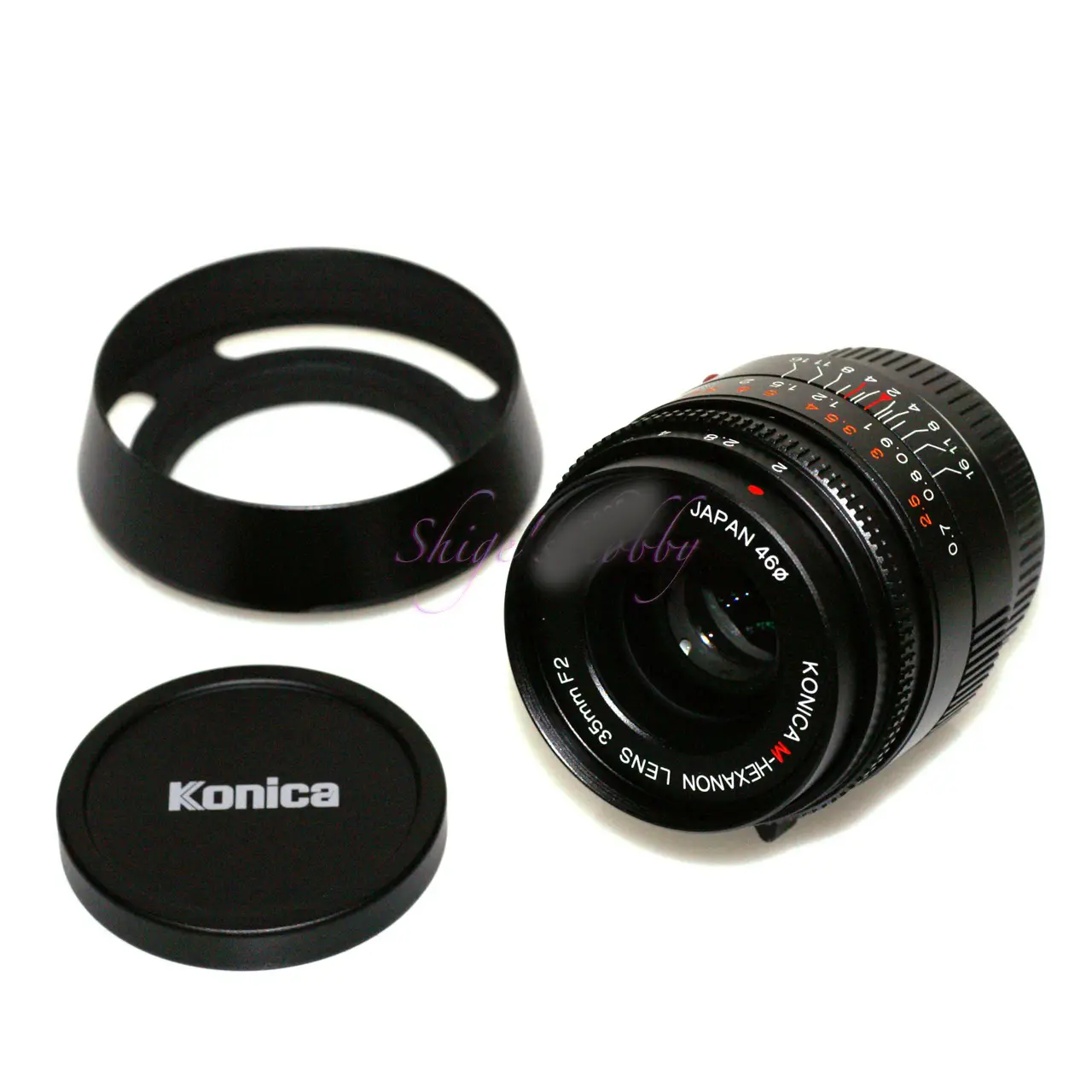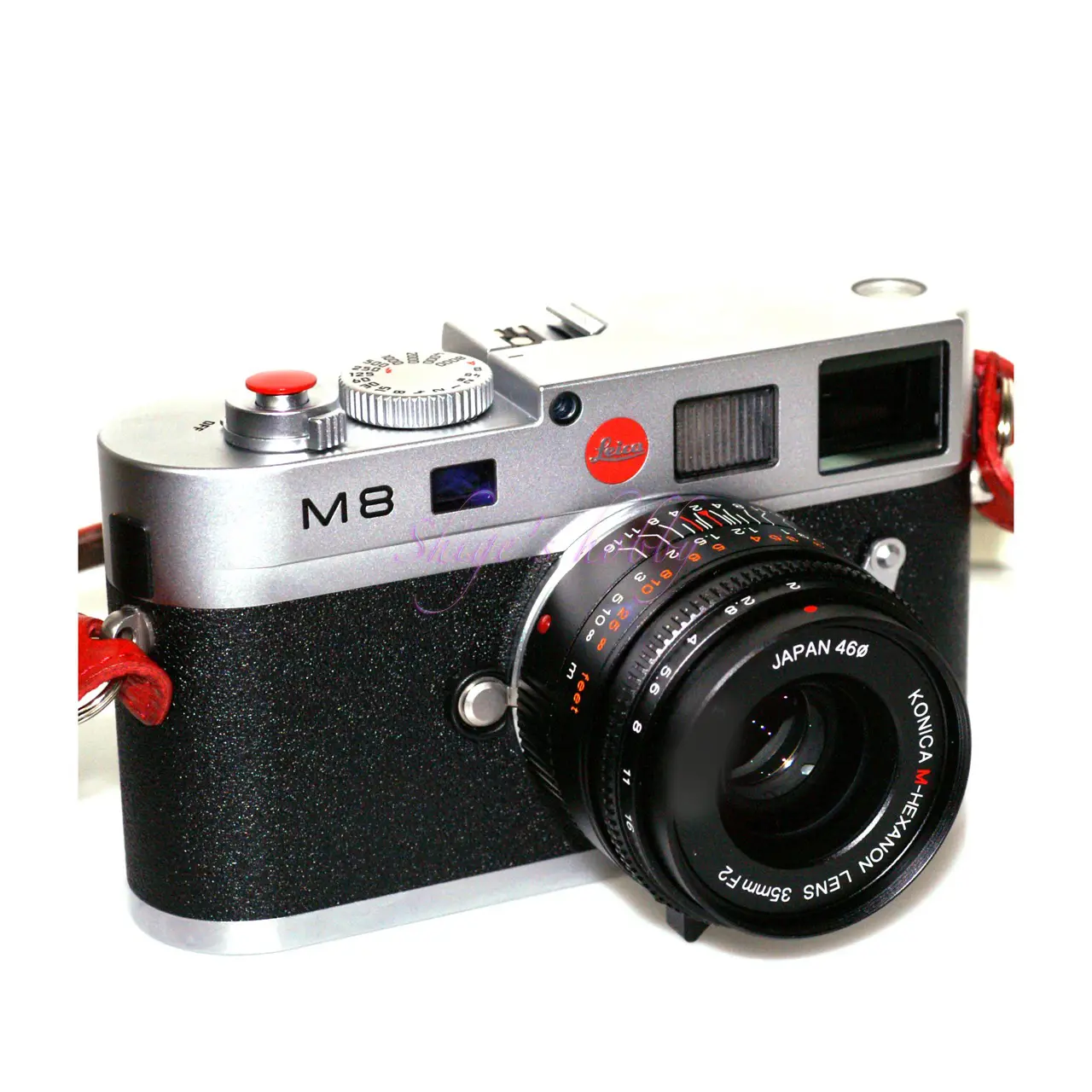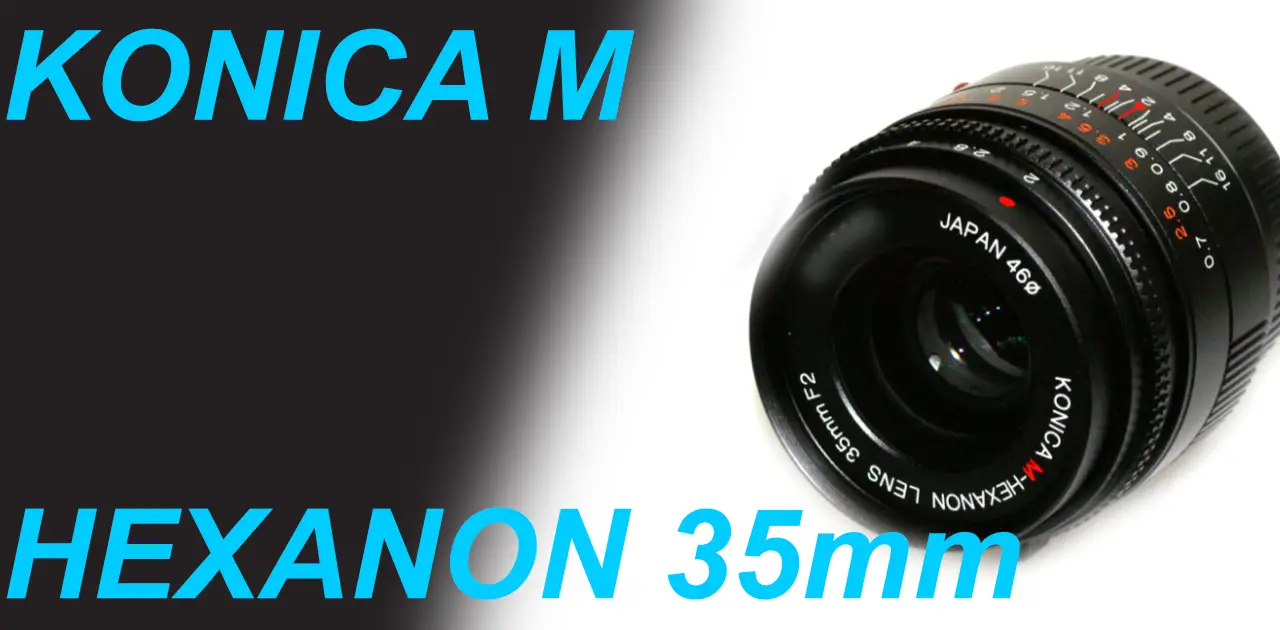Last updated on 2025-08-01
A review and photo examples using the KONICA M HEXANON 35mm F2 with film and digital cameras.
- Please see the disclaimer regarding advertising here.
- Italicized links in the text are advertisement links that take you to other sites.
Table of contents
Gallery
- The sample photo were taken with :
- HEXAR-RF +KODAK PKR-64 Reversal film
- LEICA M9
Review


1.Overview
The KM HEXANON 35mm is a wide-angle lens for the Leica M mount released in 2000.
Detailed specifications are listed in the table, but the main specifications are as follows:
- Lens construction: 7 groups, 8 elements, retrofocus type
- Minimum shooting distance: 0.7m
- Aperture value: F2
- Aperture blades: 10
- Hood: Dedicated circular slit, screw-in type
After screwing the lens hood into the end of the lens barrel, the end of the hood can be rotated 120° to move the hood slit to a position that does not interfere with the viewfinder. There is no device to fix the end of the hood, so the position may shift inside the camera bag.
The exterior design is almost the same as the Hexanon, 28mm, 50mm, and 90mm, but the lens barrel is equipped with a focus lever similar to that of the Summicron 6-element lens. This is thought to be a response to the lens barrel being thicker than other Hexanons.
2.Usability
The KM HEXANON 35mm is an excellent lens that can obtain uniform images from the widest aperture, and there is little change in image quality due to aperture changes.
This is due to the use of a retrofocus lens structure.
The L39 screw-mount lens with the same specifications, focal length 35mm and maximum aperture F2, released by Konica in the past, is a modified Xenotar lens, so this lens has a completely new lens structure.
- The Xenotar type is a hybrid with a Gaussian type front group and a Topogon type rear group, and Zeiss’s Biometar has a similar structure. Konica’s L39 Hexanon 35mm F2 is called a modified Xenotar because it adds two lenses to the Topogon type rear group.
The new M Hexanon 35mm F2 does not follow past lens structures but challenges itself to a new lens structure.
As a result, the image quality has improved flatness, making it suitable for the digital camera era.
However, despite the lens barrel having the same specifications as the conventional compact 35mm F2 lens, the barrel has become larger and the lens is thicker than other M Hexanon lenses.
From a user perspective, it is disappointing that the barrel has become larger despite there being no change in the specifications, and if the barrel was going to be larger, I would have liked to have seen the M Hexanon 35mm F1.4, which goes beyond previous lens specifications and extends the maximum aperture to F1.4.
Perhaps because this lens was released later than other lenses, there seem to be fewer of them on the market, and it is less commonly seen on the used market than other Konica M-mount lenses, and it is also more expensive.
3.Summary.
In conclusion, To sum up the KM HEXANON 35mm, the new design provides stable images at full aperture, with modern, flat, uniform rendering.
This is largely due to the change in lens configuration from Gaussian to retrofocus, resulting in rendering that is different from that of the conventional L39 mount Hexanon. Also, perhaps because the design is not optimized, the lens barrel is larger and heavier than conventional lenses. How you think about these two points is what you should consider when purchasing.
There are many options for the 35mm focal length, so finding a lens you like can be difficult, but fun.
Specification
The latest Carl Zeiss Biogon 35mm is almost the same length as this lens. Although this Biogon 35mm is also called a Biogon type, the overall length of the lens is longer because the lens is designed to have a longer back focus.
These two lenses are similar in some ways, and the lenses have become larger to improve lens performance. However, as a photographer, I would like lenses for 35mm F2 class rangefinder cameras to be compact.
Leica’s latest APO-Summicron has 5 groups and 10 lenses, but the lens length is only 41mm, which shows Leica’s technical skill. However, the price is too high and it is not something that can be purchased casually.
A compact 35mm F2 lens is the Hexanon 35mm F2 with L39 screw mount that Konica previously released. It is an older lens whose depiction changes when the aperture value is changed, but it has sufficient resolution and beautiful bokeh for a film camera.
- The lens construction diagrams are quoted from each company’s materials, and the sizes have been adjusted by us, so they are not exact.

| Item | M HEXANON | CARL ZEISS BIOGON | LEICA APO SUMMICRON |
| focal length(mm) | 35 | 35 | 35 |
| Maximum aperture | 2 | 2 | 2 |
| Minimum aperture | 16 | 22 | 16 |
| Leaf blade | 10 | 10 | 11 |
| Lens configuration | 8 elements in 7 groups | 9 elements in 6 groups | 10 elements in 5 groups |
| Minimum distance(m) | 0.7 | 0.7 | 0.3 |
| Lens length(mm) | 45.1 | 43.3 | 40.9 |
| Lens max diameter(mm) | 55.7 | 52 | 53 |
| Filter type | 46 | 43 | 39 |
| Weight(g) | 260 | 230 | – |
| Hood | Circular slit/Screw-in | Bayonet | Screw-in |
| Lens mount | KM | ZM | M |
| Release date | 2000 | 2005 | 2021.4.21 |
| Production numbers | – | ? | ? |
| Price | – | ¥95,000 | ¥960,000-(2021) ¥1,300,000-(2024) |
| Focal length | Lens name | Release date | Technical Report |
| 28mm | M-HEXANON f28 / F2.8 | 1999年 | 28/50/90mm-PDF |
| 50mm | M-HEXANON f50 / F2 | 1999年 | 28/50/90mm-PDF |
| 90mm | M-HEXANON f90 / F2.8 | 1999年 | 28/50/90mm-PDF |
| 35mm | M-HEXANON f35 / F2 | 2000年 | 35mm-PDF |
| 50mm | M-HEXANON f50 / F1.2 | 2001年 | 50mm/F1.2-PDF |
| 21-35mm | M-HEXANON f21-35 / F3.4-4 | 2002年 | 21-35mm-PDF |
Affiliate links
- Please see the disclaimer regarding advertising here.
- Italicized links in the text are advertisement links that take you to other sites.

- Leica lens・Ads by Amazon
- Konica lens・Ads by Amazon
Reference links
Update
- 2025.3.18
- 2024.03.02:Update the article
- 2022.05.25:First draft



Be First to Comment